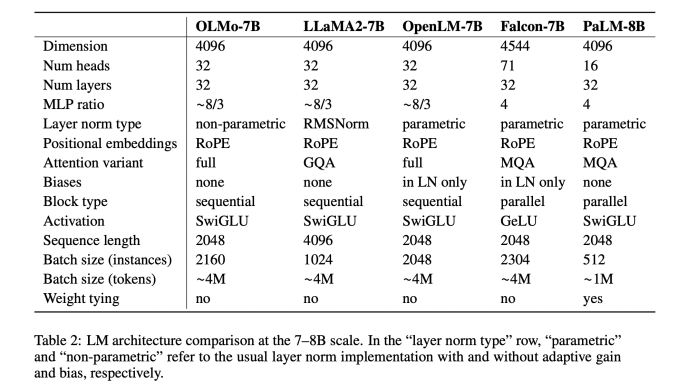
With the rising complexity and capability of Artificial Intelligence (AI), its latest innovation, i.e., the Large Language Models (LLMs), has demonstrated great advances in tasks, including text generation, language translation, text summarization, and code completion. The most sophisticated and powerful models are frequently private, limiting access to the essential elements of their training procedures, including the architecture details, the training data, and the development methodology.
The lack of transparency imposes challenges as full access to such information is required in order to fully comprehend, evaluate, and enhance these models, especially when it comes to finding and reducing biases and evaluating potential dangers. To address these challenges, researchers from the Allen Institute for AI (AI2) have released OLMo (Open Language Model), a framework aimed at promoting an atmosphere of transparency in the field of Natural Language Processing.
OLMo is a great introduction to the recognition of the vital need for openness in the evolution of language model technology. OLMo has been offered as a thorough framework for the creation, analysis, and improvement of language models rather than only as an additional language model. It has not only made the model’s weights and inference capabilities accessible but also has made the entire set of tools used in its development accessible. This includes the code used for training and evaluating the model, the datasets used for training, and comprehensive documentation of the architecture and development process.
The key features of OLMo are as follows.
OLMo has been built on AI2’s Dolma set and has access to a sizable open corpus, which makes strong model pretraining possible.
To encourage openness and facilitate additional research, the framework offers all the resources required to comprehend and duplicate the model’s training procedure.
Extensive evaluation tools have been included which allows for rigorous assessment of the model’s performance, enhancing the scientific understanding of its capabilities.
OLMo has been made available in several versions, the current models out of which are 1B and 7B parameter models, with a bigger 65B version in the works. The complexity and power of the model can be expanded by scaling its size, which can accommodate a variety of applications ranging from simple language understanding tasks to sophisticated generative jobs requiring in-depth contextual knowledge.
The team has shared that OLMo has gone through a thorough evaluation procedure that includes both online and offline phases. The Catwalk framework has been used for offline evaluation, which includes intrinsic and downstream language modeling assessments using the Paloma perplexity benchmark. During training, in-loop online assessments have been used to influence decisions on initialization, architecture, and other topics.
Downstream evaluation has reported zero-shot performance on nine core tasks aligned with commonsense reasoning. The evaluation of intrinsic language modeling used Paloma’s large dataset, which spans 585 different text domains. OLMo-7B stands out as the largest model for perplexity assessments, and using intermediate checkpoints improves comparability with RPJ-INCITE-7B and Pythia-6.9B models. This evaluation approach guarantees a comprehensive comprehension of OLMo’s capabilities.
In conclusion, OLMo is a big step towards creating an ecosystem for open research. It aims to increase language models’ technological capabilities while also making sure that these developments are made in an inclusive, transparent, and ethical manner.
Check out the Paper, Model, and Blog. All credit for this research goes to the researchers of this project. Also, don’t forget to follow us on Twitter and Google News. Join our 36k+ ML SubReddit, 41k+ Facebook Community, Discord Channel, and LinkedIn Group.
If you like our work, you will love our newsletter..
Don’t Forget to join our Telegram Channel
Tanya Malhotra is a final year undergrad from the University of Petroleum & Energy Studies, Dehradun, pursuing BTech in Computer Science Engineering with a specialization in Artificial Intelligence and Machine Learning.She is a Data Science enthusiast with good analytical and critical thinking, along with an ardent interest in acquiring new skills, leading groups, and managing work in an organized manner.





Be the first to comment